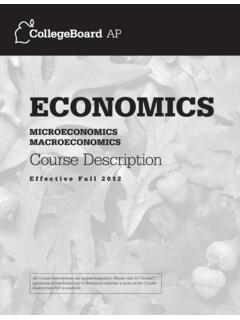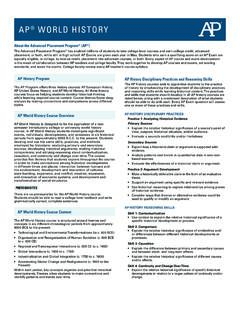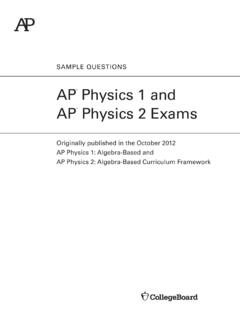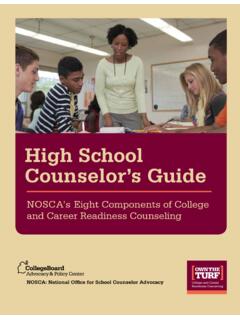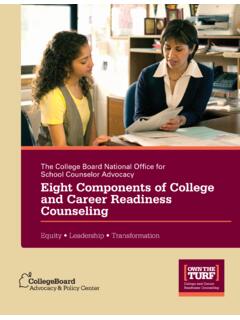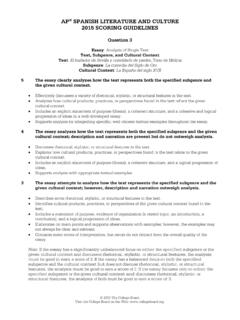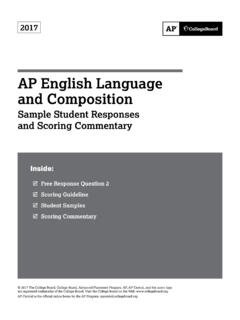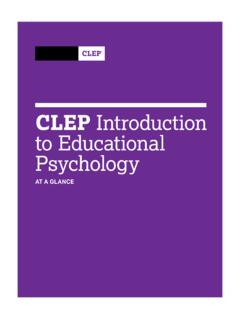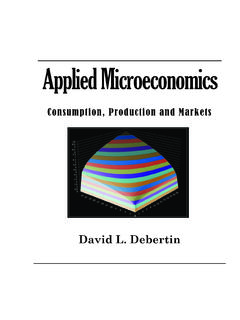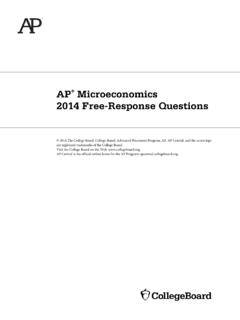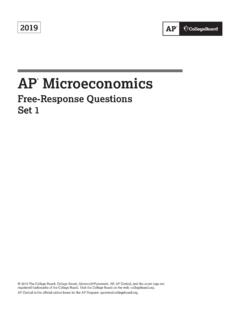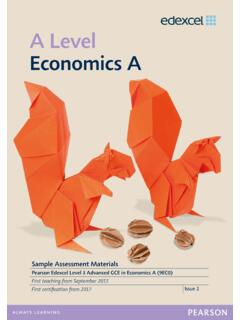Transcription of 2001 AP Microeconomics Questions - College Board
1 AP Microeconomics 2001 Free-Response Questions The materials included in these files are intended for use by AP teachers for course and exam preparation in the classroom; permission for any other use must be sought from the Advanced Placement Program. Teachers may reproduce them, in whole or in part, in limited quantities, for face-to-face teaching purposes but may not mass distribute the materials, electronically or otherwise. These materials and any copies made of them may not be resold, and the copyright notices must be retained as they appear here.
2 This permission does not apply to any third-party copyrights contained herein. These materials were produced by Educational Testing Service (ETS), which develops and administers the examinations of the Advanced Placement Program for the College Board . The College Board and Educational Testing Service (ETS) are dedicated to the principle of equal opportunity, and their programs, services, and employment policies are guided by that principle. The College Board is a national nonprofit membership association dedicated to preparing, inspiring, and connecting students to College and opportunity.
3 Founded in 1900, the association is composed of more than 3,900 schools, colleges, universities, and other educational organizations. Each year, the College Board serves over three million students and their parents, 22,000 high schools, and 3,500 colleges, through major programs and services in College admission, guidance, assessment, financial aid, enrollment, and teaching and learning. Among its best-known programs are the SAT , the PSAT/NMSQT , the Advanced Placement Program (AP ), and Pacesetter . The College Board is committed to the principles of equity and excellence, and that commitment is embodied in all of its programs, services, activities, and concerns.
4 Copyright 2001 by College Entrance Examination Board . All rights reserved. College Board , Advanced Placement Program, AP, and the acorn logo are registered trademarks of the College Entrance Examination Board . 2001 AP Microeconomics FREE-RESPONSE Questions . Microeconomics . section II. Planning time 10 minutes Writing time 50 minutes Directions: You have fifty minutes to answer all three of the following Questions . It is suggested that you spend approximately half your time on the first question and divide the remaining time equally between the next two Questions .
5 In answering the Questions , you should emphasize the line of reasoning that generated your results; it is not enough to list the results of your analysis. Include correctly labeled diagrams, if useful or required, in explaining your answers. A correctly labeled diagram must have all axes and curves clearly labeled and must show directional changes. 1. (a) Assume that a profit-maximizing firm in a perfectly competitive industry is earning economic profits. For a given market price, draw a correctly labeled graph and show each of the following for a typical firm in this perfectly competitive industry.
6 (i) Marginal revenue (ii) Output (iii) Economic profits (b) Using the information in (a), draw correctly labeled side-by-side graphs for the industry and a typical firm. (i) Given the existence of economic profits of the typical firm, show on the graphs how the industry adjusts in the long run and explain the process that leads to the long-run equilibrium. (ii) Show on the graphs each of the following for the industry and for the typical firm in long-run equilibrium. Price Output (c) Now assume that the government sets a price that is less than the equilibrium price but greater than average variable cost.
7 Indicate how each of the following will change for the typical firm and explain why the change occurs. (i) Marginal revenue (ii) Level of output (iii) Short-run total cost (iv) Short-run total revenue Copyright 2001 by College Entrance Examination Board . All rights reserved. Advanced Placement Program and AP are registered trademarks of the College Entrance Examination Board . GO ON TO THE NEXT PAGE. 2. 2001 AP Microeconomics FREE-RESPONSE Questions . 2. Assume that product X is produced in a perfectly competitive industry and that product X yields costs to individuals who are neither consumers nor producers of product X.
8 (a) Using one correctly labeled graph, show the industry output and price under each of the following conditions. (i) The industry ignores the externality. (ii) The industry produces the socially optimum level of output. Assume that the market is producing the level of output you identified in (i). (b) Identify one policy the government might use to achieve the level of output you identified in (ii). 3. Sparkle Car Wash is a profit-maximizing firm with the following production information. Number of Workers Number of Cars Washed per Day 0 0.
9 1 15. 2 35. 3 60. 4 75. 5 85. 6 80. (a) With which worker is marginal product maximized? (b) Identify and define the economic principle that explains why marginal product eventually decreases. (c) Explain why Sparkle would never hire the sixth worker. (d) If Sparkle charges $6 for washing a car, what is the maximum daily wage that Sparkle would be willing to pay the fourth worker? END OF EXAMINATION. Copyright 2001 by College Entrance Examination Board . All rights reserved. Advanced Placement Program and AP are registered trademarks of the College Entrance Examination Board .
10 3.
